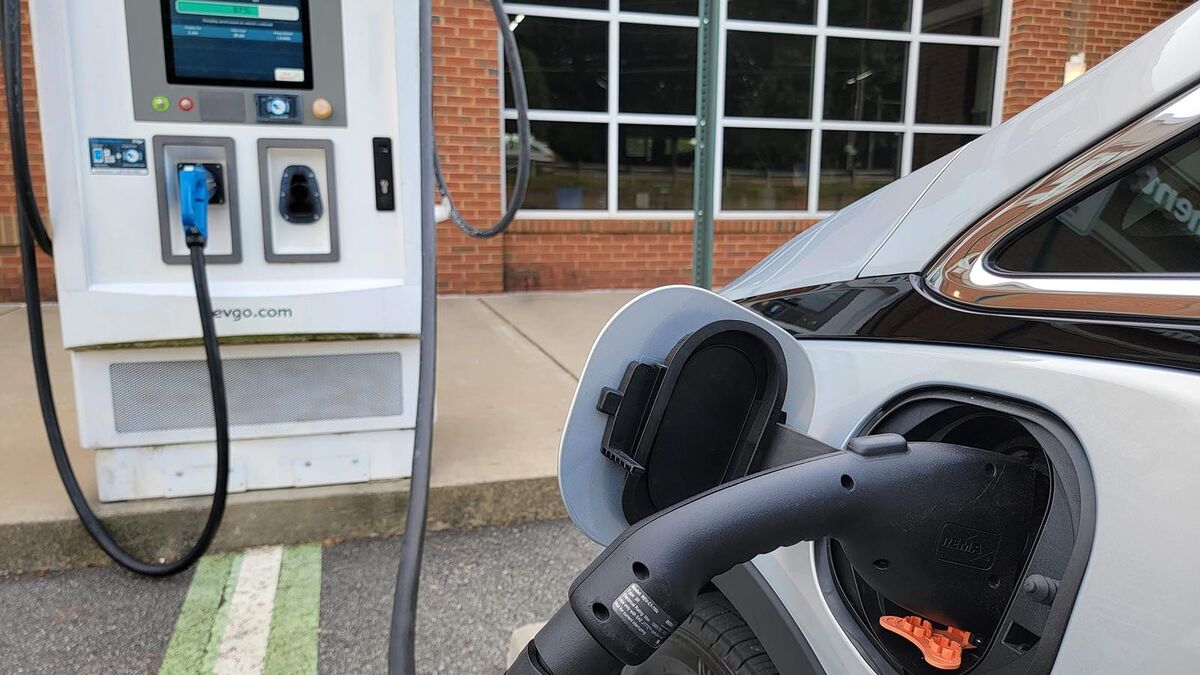
- A new report finds the number of EV fast chargers growing despite a lack of federal funds
The United States could add 16,700 DC fast chargers for electric vehicles (EVs) in 2025, according to a new report.
Paren, a company that studies EV charging infrastructure, released its second-quarter industry snapshot report today. “Deployment of new fast charging ports and stations is on a record pace in 2025,” the company says.
America could open 2.4 times as many fast chargers in 2025 as it did in 2022, Paren says.
Only a Small Percentage of Chargers are the Fast Kind
- There are three kinds of chargers; this report covers only the fastest kind
EV chargers come in three levels.
Level 1 charging is, essentially, plugging your EV into an ordinary home outlet with a power cord like the one supplying your television or microwave. It can take 24 hours or longer to fully charge a battery, though it will give most drivers more distance than they need in an average day overnight.
Level 2 charging uses a 240-volt outlet, like some clothes dryers use. Many EV drivers install a level 2 charger in their homes, and they are becoming common in shopping centers in many urban areas. A Level 2 charger will refill the battery of most EVs overnight.
Level 2 chargers will likely be the most common kind in the long run. One recent report found that, in a mature nationwide infrastructure capable of powering tens of millions of EVs, 96% of chargers would not be visible to the public.
Related: EV Charging Stations: Everything You Need to Know
Paren’s report concerns Level 3 charging stations, also known as DC fast chargers. Large boxes that look a bit like electrical transformers with touchscreens, Level 3 chargers are usually found at highway rest stops or other locations drivers might use them on a road trip. They can recharge some EVs in as little as 45 minutes.
Each EV accepts energy at a different rate, and some cannot fully take advantage of the speed of DC fast chargers. But with each new model year, advancing technology means many EVs can charge faster.
Prices Going Down, Reliability Up
- Prices declined in most states, while chargers were more reliable last quarter
It’s getting easier to find an open, working charger, and it costs less to use one when you do. Paren reports that the average Level 3 charger was used 16.1% of the time in the second quarter, down from 16.6% in Q1.
Reliability rose slightly from 85% to 85.5%, the company says, while “Average prices at travel stations declined in 43 states.”
100,000 by 2027
- At this rate, the U.S. could soon have almost doubled its number of fast chargers in a year
“At the current rate of growth, the number of U.S. fast charging ports will surpass 100,000 in 2027, nearly four times the number in 2022 and about double the number in 2024,” Paren reports.
They’re not just spreading. They’re getting faster.
Each DC fast charger can pump out electricity at a set rate. Until recently, most were capped at 150 kW. Now, Paren reports, large charging network operators are standardizing around 350 kW or 400 kW chargers.
In parts of China and Europe, companies are now installing one mW chargers that can recharge some cars in as little as five minutes. That’s largely a future-proofing exercise — few current EVs are capable of using them to their potential.
Networks are also adding more ports per station. The average station can now power 5.4 cars, Paren says. In the first quarter, that same figure was just 4.7.
Until recently, Tesla used its proprietary charging port, the North American Charging System (NACS) plug. Most rivals used a different port, the Combined Charging System (CCS) plug. Paren reports that 48% of public fast chargers are now CCS-equipped, with 45% using the Tesla port.
Additionally, 7% use a rarer third design, the CHAdeMO port, found on most Nissan Leaf EVs.
But automakers have largely agreed to standardize around the NACS port. Over the coming years, we should see it come to dominate public charging. Chargers will be interchangeable with the use of adapters, though some can slow the charging process.
Federal Dollars in Legal Fight
- Congress set aside federal funds for fast chargers, but the Trump administration is trying not to spend them
The public charging network is growing mostly with private money.
Congress set aside more than $5 billion in taxpayer funds during the Biden administration to build 500,000 chargers. But the government executed the program extremely slowly. By the time President Donald Trump took power, little of the money had been spent. As of February, Wired reports, 57 chargers were open nationwide — 499,953 short of the promise.
The Trump administration paused the funding that month. A federal judge later ruled that the administration does not have the authority to withhold funds authorized by Congress. The administration is appealing the ruling. It seems likely to reach the Supreme Court, part of a growing dispute over the President’s spending authority. The dispute has federal charger funds in limbo.

